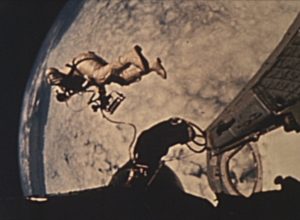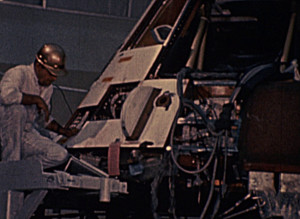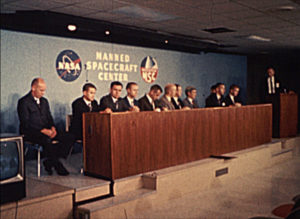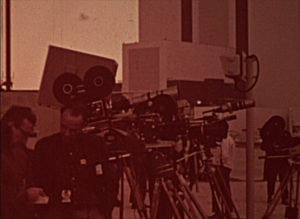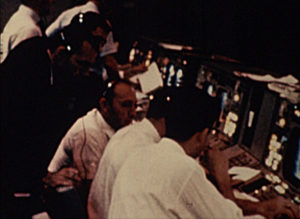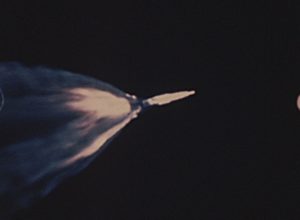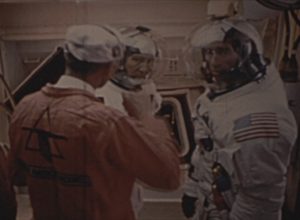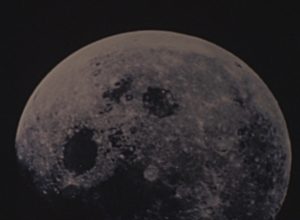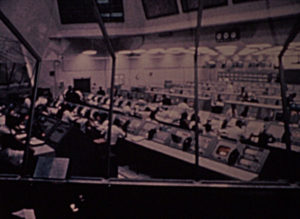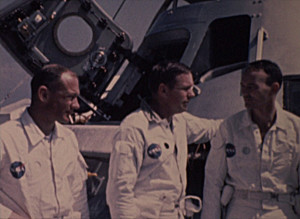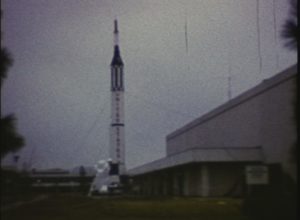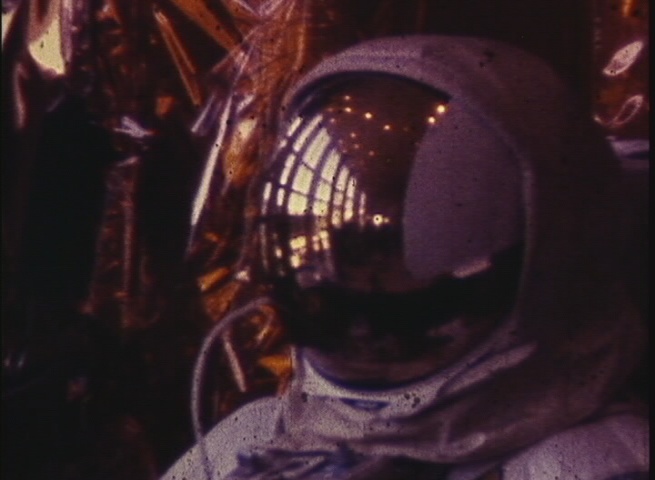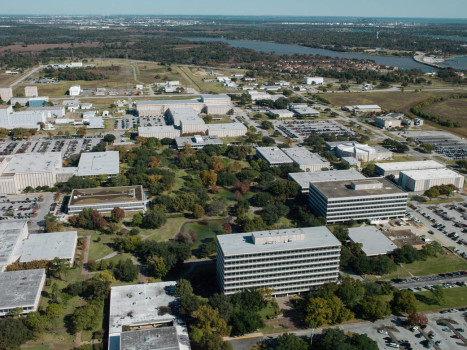
Manned Spacecraft Center
(Lyndon B. Johnson Space Center)
Houston, Texas
As the scope of the American space program grew, NASA’s Space Task Group realized it would need to expand into its own facility if it were to successfully land a man on the Moon. In 1961, the agency’s selection team chose a 1,000-acre cow pasture in Houston, Texas, as the proposed center’s location site, owing to its access to water transport and commercial jet service, moderate climate, and proximity to Rice University. In September 1963, the facility opened as the Manned Spacecraft Center (MSC).
The Center became the focal point of NASA’s manned spaceflight program, developing spacecraft for Projects Gemini and Apollo, selecting and training astronauts, and operating the Lunar Receiving Laboratory. Beginning with Gemini 4 in June 1965, MSC’s Mission Control Center also took over flight control duties from the Mercury Control Center at Cape Canaveral Air Force Station. As a result, the facility managed all subsequent manned space missions, including those related to Projects Gemini and Apollo, the Apollo Applications Program, the Space Shuttle Orbiters, and the International Space Station.
In 1973, the MSC was renamed in honor of the late President and Texas native Lyndon B. Johnson. (As Senate Majority Leader, Johnson sponsored the 1958 legislation that established NASA.) The Center continues to lead NASA’s efforts in space exploration, training both American and international astronauts, managing missions to and from the International Space Station, and operating scientific and medical research programs. Guests at the facility’s visitor complex, Space Center Houston, can see an assembled Saturn V rocket and Apollo Command and Service Modules, among other artifacts.

